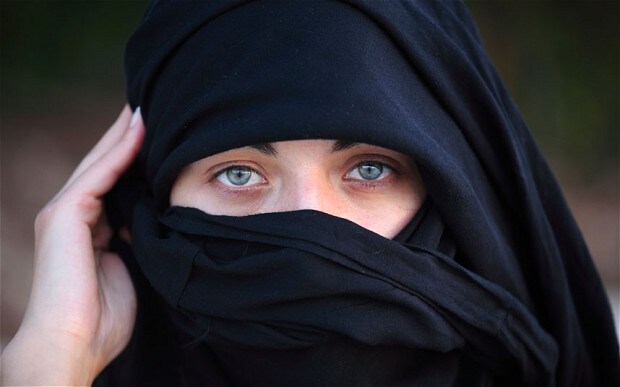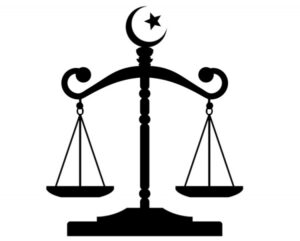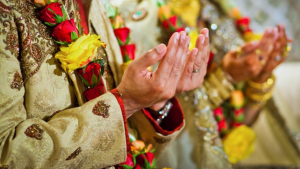This article has been authored and co-authored by Ahmad Noman Ansari and Ammar Ashfaq, 4th year students from Integral University.
Table of Contents
Introduction
When exploring the customs of modesty in religions we can observe both similarities and differences, between the face covering veil, known as the niqab and veils in other religious traditions. While there are features that set it apart from veils in Judaism and Christianity there are also parallels with the burqa in some Islamic societies and the hijab, which covers the head and neck in others. It’s important to note that while face coverings are not typically mandated by religion some married Orthodox Jewish women may choose to wear a headscarf or tickle for reasons of modesty.
Similarly, although face veiling is not common within Christianity as a whole, certain denominations encourage their members to cover their heads during worship as an expression of modesty. By considering the niqab within the context of practices we gain insights into the diverse nature of modesty, identity and religious expressions, across different faith traditions.
Niqab’s historical development
Some Muslim women wear a type of face covering called a niqab, which has a history influenced by religious and cultural factors. Its origins can be traced back to Islamic Arabia when affluent women used veils as a symbol of protection and social status. The niqab took on forms in locations and cultures but it became more prevalent in early Islamic history due to interpretations of modesty and devotion. Over time the niqabs acceptance among communities worldwide has been shaped by changes, cross cultural interactions and varying understandings of Islamic teachings. The niqab remains a topic that often sparks discussions about identity, women’s rights, religious expression and societal norms.
The face veil known as the niqab, which is used by certain Muslim women, has its origins in religious and cultural customs. Its roots are found in the early Islamic traditions, which reflected how the Islamic faith understood modesty and solitude. The niqab has taken on a variety of forms over time due to regional and cultural influences, making it a multifaceted emblem with varying connotations in different civilizations.
Religious and cultural significance
The niqab holds significance in Muslim communities due to its religious and cultural implications. From a standpoint some interpret texts as promoting modesty and privacy which has led to the practice of veiling including the niqab as a means to embody these values. For many who wear it the niqab represents their connection to their faith. Demonstrates their commitment to following specific religious principles.
On a level the niqab often represents customs that have been passed down through generations and reflects the norms of particular regions. It can also serve as a symbol of identity and belonging within communities carrying with it a sense of heritage and familial ties. However it’s important to acknowledge that interpretations and practices related to the niqab can differ significantly among cultures and individuals resulting in meanings that’re subjective, in nature.
Legal framework : Balancing freedom and security
The issue of niqab in frameworks often revolves around finding a delicate balance between protecting individual freedoms and addressing societal security concerns. In countries there are debates about whether to permit or restrict the wearing of niqab in public spaces particularly when security measures or identification processes are crucial.
On one hand advocates for freedoms emphasize the importance of upholding religious expression and personal autonomy. They argue that limitations on wearing the niqab can violate these rights and potentially lead to discrimination or marginalization of religious or cultural communities.
To address these complexities legal frameworks aim to find compromises that respect both liberties and collective security interests.
Niqab Bans : Across the nations
Here are a few case studies regarding niqab bans in different countries:
1. France: In 2011, France banned face-covering clothing, such as the niqab, in public areas. This law created a great deal of controversy. Its supporters claimed that by prohibiting religious symbols in public spaces, it respects French secular ideals and advances gender equality. Opponents see it as discriminatory and an infringement on religious freedom, leading to legal proceedings and ongoing social unrest.
2. Belgium: In 2011, Belgium passed a similar law banning all niqabs and other face veils in public places. It is against the law to wear clothing that obscures your face on public transportation, on the streets and in buildings. It also sparked discussions about societal integration and religious freedom, with others seeing it as a safety and cohesiveness measure.
Judicial interpretations and Rulings
Different countries and legal systems have resulted in varying interpretations of the niqab by the judiciary. These interpretations often rely on norms, religious freedom, fundamental rights and security considerations. Here are some notable examples;
European Court of Human Rights (ECHR);
The ECHR has dealt with cases regarding niqab restrictions, in countries such as France and Belgium. The Court has occasionally supported the right of states to impose limitations on face coverings under circumstances citing concerns for harmony, public safety and the protection of others freedoms and rights.
National courts;
In France, Belgium and other countries national courts have issued judgments both in favor of and against banning the niqab. Some judges have upheld these restrictions based on secularism, gender equality and the state’s authority to regulate attire in settings. Conversely other courts have overturned niqab bans by emphasizing rights and freedom of religion. They argue that laws completely prohibiting coverings would unjustly violate these rights.
Supreme Courts and constitutional tribunals;
Supreme courts or constitutional tribunals in countries, like Austria and Switzerland have deliberated on niqab bans.
These courts often find themselves in the position of reconciling conflicting rights while considering the needs and concerns of society, as a whole. They frequently emphasize the importance of striking a balance, between freedoms and broader societal matters.
Public Perception and Societal responses
The niqab, which is a type of face covering worn by Muslim women, is perceived differently by the public and society at large. These perceptions are often influenced by factors such as politics, religion and culture. Some individuals view the niqab as a symbol of freedom and religious expression emphasizing the importance of embracing diverse religious practices. However there are also opposing viewpoints that regard the niqab as a security concern in specific situations or as an obstacle to integration and gender equality. These contrasting opinions shape discussions and public discourse surrounding the niqab ultimately influencing policies related to it. It is crucial to acknowledge this complexity in order to foster dialogue and create inclusive strategies that balance individual rights, with community needs.
Human Rights and Niqab: A Delicate Intersection
Human rights and the niqab are closely related; they represent a nuanced balance between the right to personal freedom of religion expression and more general social issues. Conversations frequently straddle the line between defending a person’s freedom to dress however they see fit and taking into account possible effects on security, social integration, and gender equality. Maintaining fundamental rights for all parties concerned while acknowledging differing viewpoints necessitates striking a careful balance in order to respect both the right to religious freedom and the larger framework of human rights principles.
Legislative Challenges and Reform Proposals
Crafting legislation concerning the niqab often presents a challenge as it requires finding a balance between religious freedom and broader societal considerations. Proposed reforms aim to strike an equilibrium safeguarding personal liberties while addressing concerns regarding social integration and security. Various suggestions have emerged, ranging from the prohibition of face coverings in public spaces for security reasons to implementing restrictions that ensure identification, in specific situations while still respecting religious beliefs. To effectively tackle these issues and uphold rights lawmakers must navigate the complexities of cultural diversity, individual freedoms and societal harmony.
Gender Equality Discourse
When discussing gender equality and the niqab there are aspects to consider. Some people view the niqab as a symbol of strength and an important expression of religious beliefs in public. However feminists raise concerns about its impact on gender equality particularly regarding issues of autonomy, social pressure and limited visibility for women. This complex conversation intersects with discussions on women’s rights, cultural norms and religious freedom prompting us to explore how personal choices can be balanced with societal implications, for gender equality.
Conclusion: Striking a Balance in Contemporary societies
Finding an approach to the niqab in modern societies requires a thoughtful strategy that respects both personal freedoms and societal considerations. It involves addressing concerns related to security, integration and gender equality while also upholding the right to practice one’s religion. To achieve this balance it is crucial to carefully consider legislation that navigates the complexities of fundamental rights and cultural diversity fostering open discussions and mutual understanding among diverse communities. Ultimately the way forward lies in creating frameworks that safeguard individual liberties within the context of broader social responsibilities promoting respectful dialogue among individuals, with differing perspectives.
REFERENCE
- Bakht N, ‘In Your Face’ (2014) 24 Social & Legal Studies 419
- bay julienne, ‘The History of the Niqab’ (ottawasun26 September 2015) <https://ottawasun.com/2015/09/26/the-history-of-the-niqab>
- ‘France: Banning the Niqab Violated Two Muslim Women’s Freedom of Religion – UN Experts’ (OHCHR23 October 2018) <https://www.ohchr.org/en/press-releases/2018/10/france-banning-niqab-violated-two-muslim-womens-freedom-religion-un-experts>
- Piela A, ‘Muslim Women and the Politics of the Headscarf’ (JSTOR Daily6 April 2022) <https://daily.jstor.org/muslim-women-and-the-politics-of-the-headscarf/>
- Slininger S, ‘Veiled Women: Hijab, Religion, and Cultural Practice’ (2013) <https://www.eiu.edu/historia/Slininger2014.pdf>
- ‘Veiling: View as Single Page’ (www.open.edu) <https://www.open.edu/openlearn/history-the-arts/veiling/content-section-4/?printable=1> accessed 9 May 2023
- Vyver J, ‘Explained: Why Muslim Women Wear a Burka, Niqab or Hijab’ ABC News (23 September 2014) <https://www.abc.net.au/news/2014-09-24/why-do-muslim-women-wear-a-burka-niqab-or-hijab/5761510>
- ‘What Is the History of the Niqab? | 3 Answers from Research Papers’ (SciSpace – Question) <https://typeset.io/questions/what-is-the-history-of-the-niqab-3rkjnwpq24> accessed 11 January 2024
- Wikipedia Contributors, ‘Niqāb’ (Wikipedia8 October 2019) <https://en.wikipedia.org/wiki/Niq%C4%81b>
- Zempi I, ‘Veiled Muslim Women’s Views on Law Banning the Wearing of the Niqab (Face Veil) in Public’ (2019) 42 Ethnic and Racial Studies 1
- zethenn, ‘What Is the Origin and History of the Niqab or Burqa? Where Did These Garments Originate, and Why Are They Worn?’ (Quora2015) <https://www.quora.com/What-is-the-origin-and-history-of-the-niqab-or-burqa-Where-did-these-garments-originate-and-why-are-they-worn#:~:text=The%20origin%20of%20the%20niqab> accessed 11 January 2024



